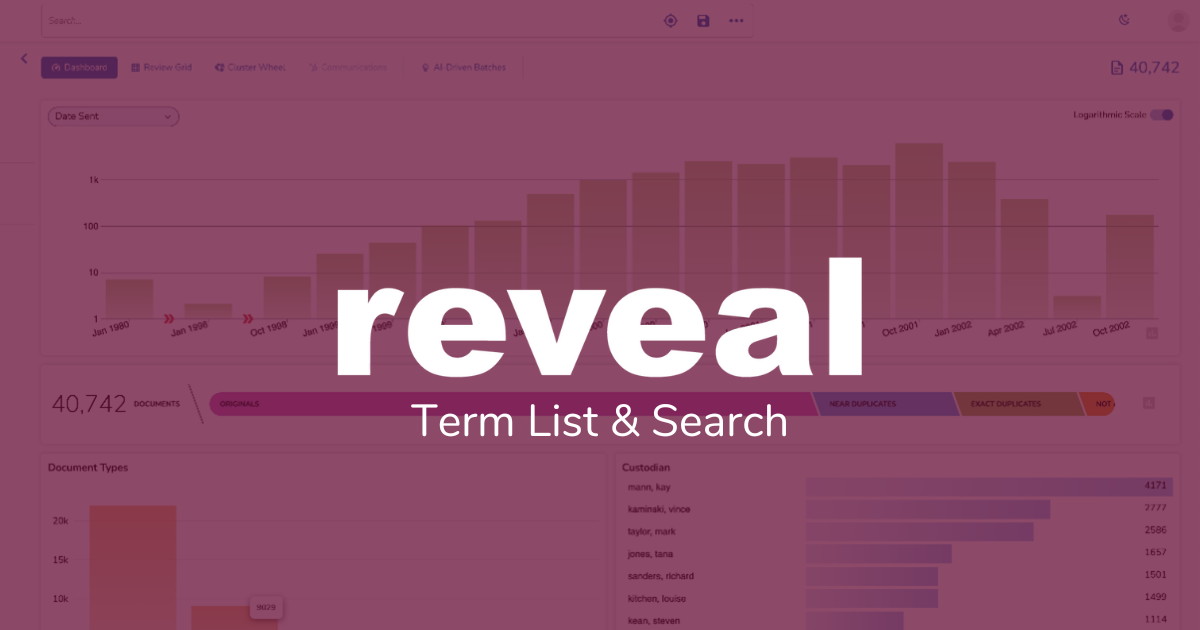Search in Reveal 11: Term List Search
We introduced a new search function with Reveal 11: Term List Search.
In earlier posts, I discussed the ability, in Reveal 11, to mix and match keyword and concept searches (Search in Reveal 11: Keyword, Concept, or Both) and to perform searches with just a few clicks (Search in Reveal 11: What a Click Can Do). Today’s post looks at a new way to work with search terms and integrating search for terms with other types of searches.
Since the earliest days of eDiscovery, we have needed to search for terms, and usually not just one or terms but a list of them. The terms might come from our clients, from opposing counsel, from a regulatory agency. We might build them from the allegations in the complaint. We might compile them as talk with custodians and witnesses. We might put them together as we work through a set of discovery requests.
No matter how we prepare our lists of terms, we often want a quick way to run them against whatever data we have and get a sense of the likely results.
The Basics of Using Term List Search
The new Reveal Term List Search function lets you do just that. Here are the basis steps.
Open Advanced Search by clicking on the button at the right edge of the Search bar, then click on the Term List button to bring up the Term List Search box:

In the Term List Search box, enter a list of terms.
I am using the Enron data here. Enron, like others, used “special purpose entities” to access capital or hedge risk. Enron used thousands of SPEs, including LJM Cayman LP, LJM2 Co-Investment LP, and Raptor. (For an overview, see C. Williams Thomas, The Rise and Fall of Enron, Journal of Accountancy (March 31, 2002).)
To begin to search for information about those entities, I will use this list of terms:
“special purpose entit*”
spe
spes
spe’s
raptor
ljm
ljm2
I can type in a list of terms, one term per line, or copy the list from elsewhere and paste it in:
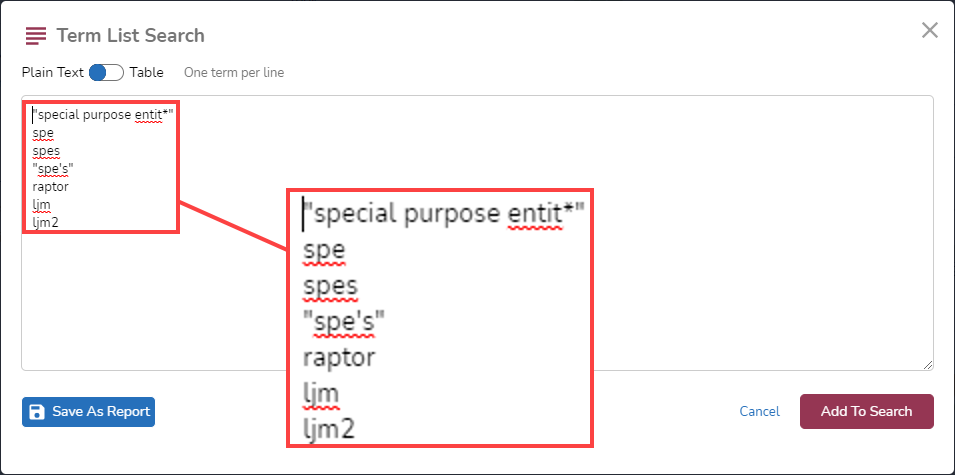
So far, I have not done anything special. When I click on the switch at the top left of the pane, however, I switch the format from a plain-text list to a table:
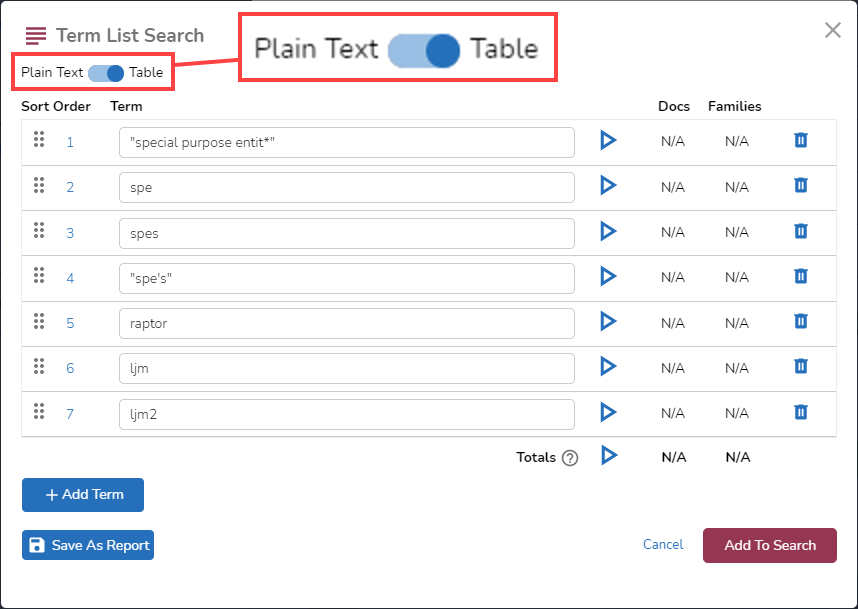
At this point, I could go ahead and add the terms to my search. Before I do that, I might want to find out how many documents each term would return. To see the results for a single term, I can click on the blue triangle to the right of that term. To see the results for all the terms, individually and in total, I can click on the blue triangle at the bottom:
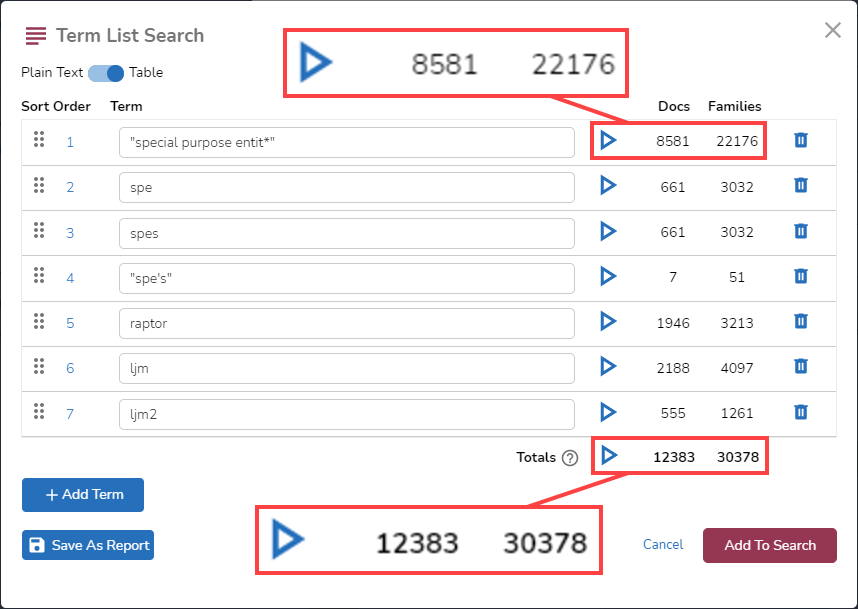
From here, I could modify the list of terms, save the term list as a report, or add it to a search. Here, I added it to my search:
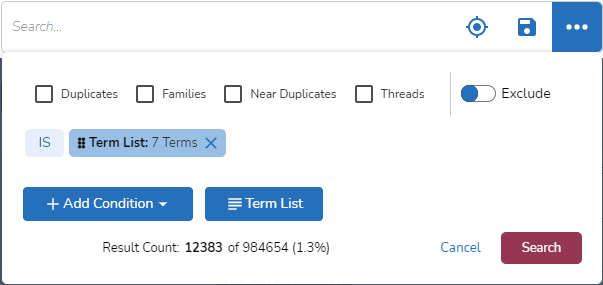
Using Terms List Search to Test Efficacy of Terms
There are many ways to use the Terms List Search function. One way is to test the apparent efficacy of terms.
Above, the term ljm returned 2,188 documents and the term ljm2 returned 555. Looking at those results, I might ask:
- Was there an ljm3? An ljm4?
- Did people misspell ljm, possibly as ljn with an “n”?
With those questions in mind, I entered the terms ljm3, ljm4, ljn, and ljn* and got these results:
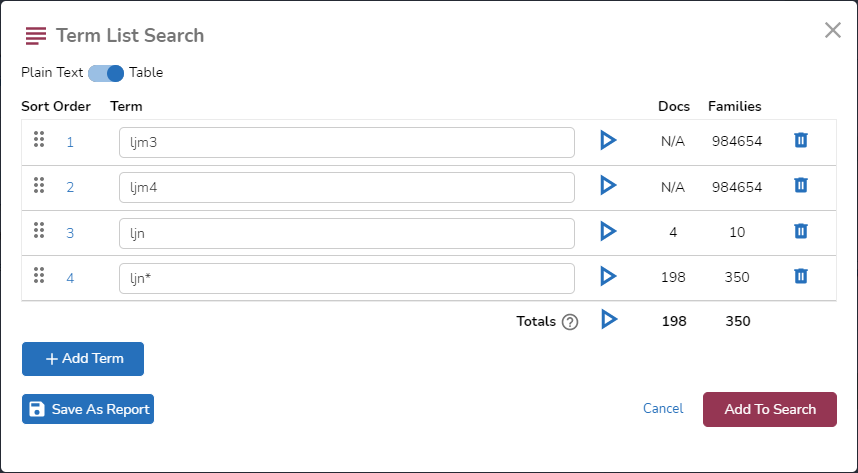
Seeing that there are 198 documents containing ljn or a term starting with those characters, I added those terms to my search and went to the results:
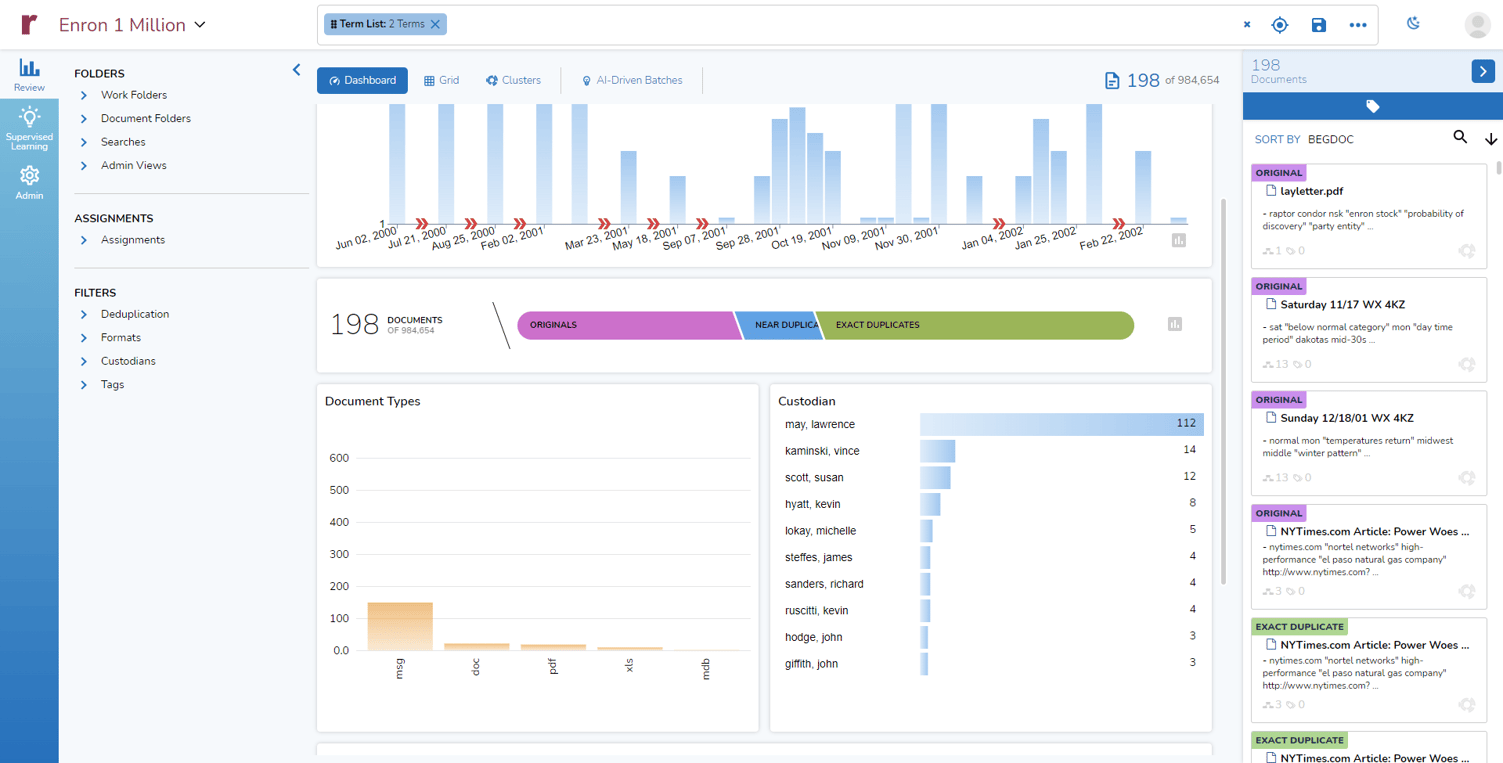
To speed up my exploration, I clicked on Originals in the Candy Bar. That excluded near duplicates and exact duplicates from my search results, further reducing the results from 198 documents to 73:
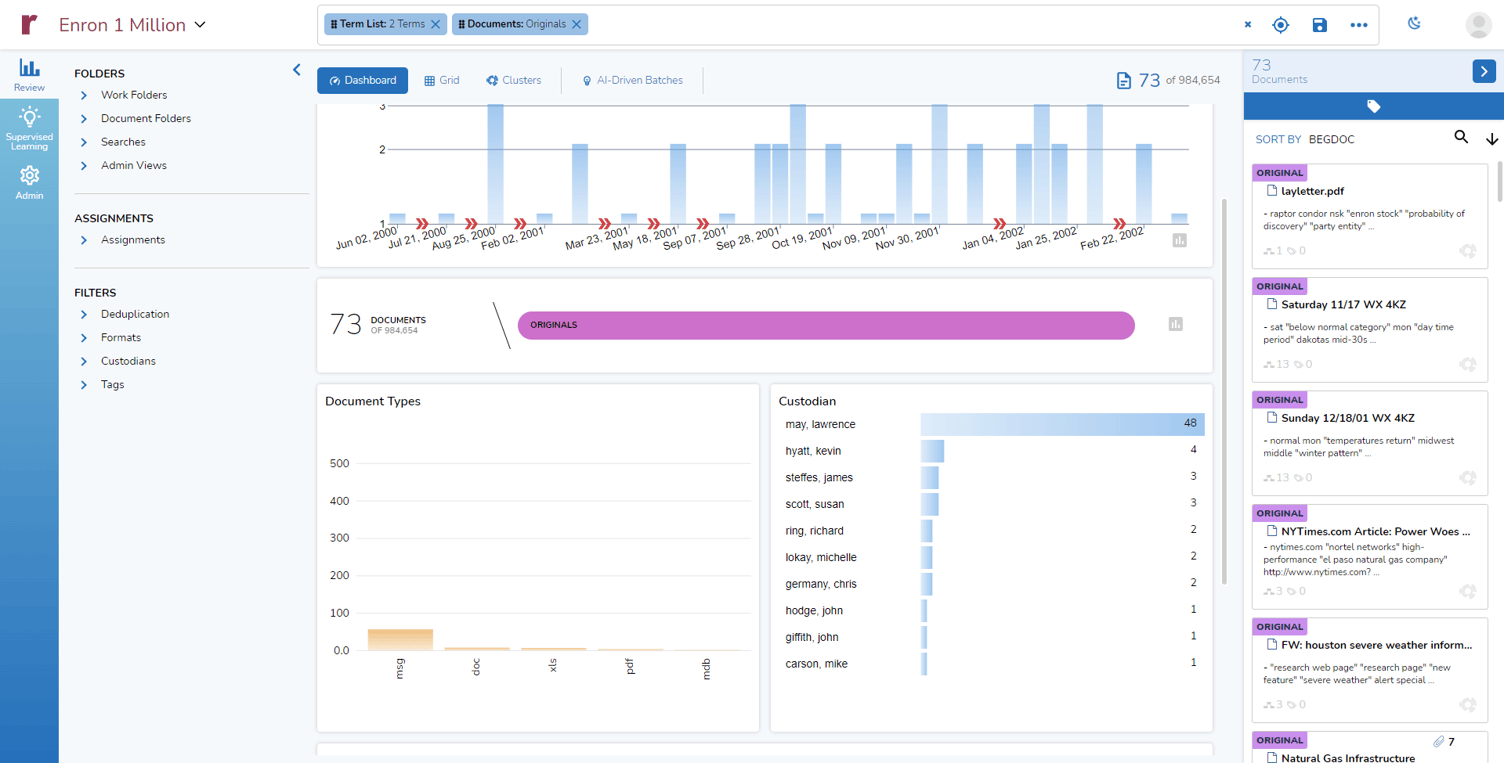
Looking at the list of custodians, I noticed that Lawrence May accounted for almost all of the search results:
-png.png)
I clicked on the May custodian bar, further narrowing my results to 48 documents, then I clicked on the first document in the list:
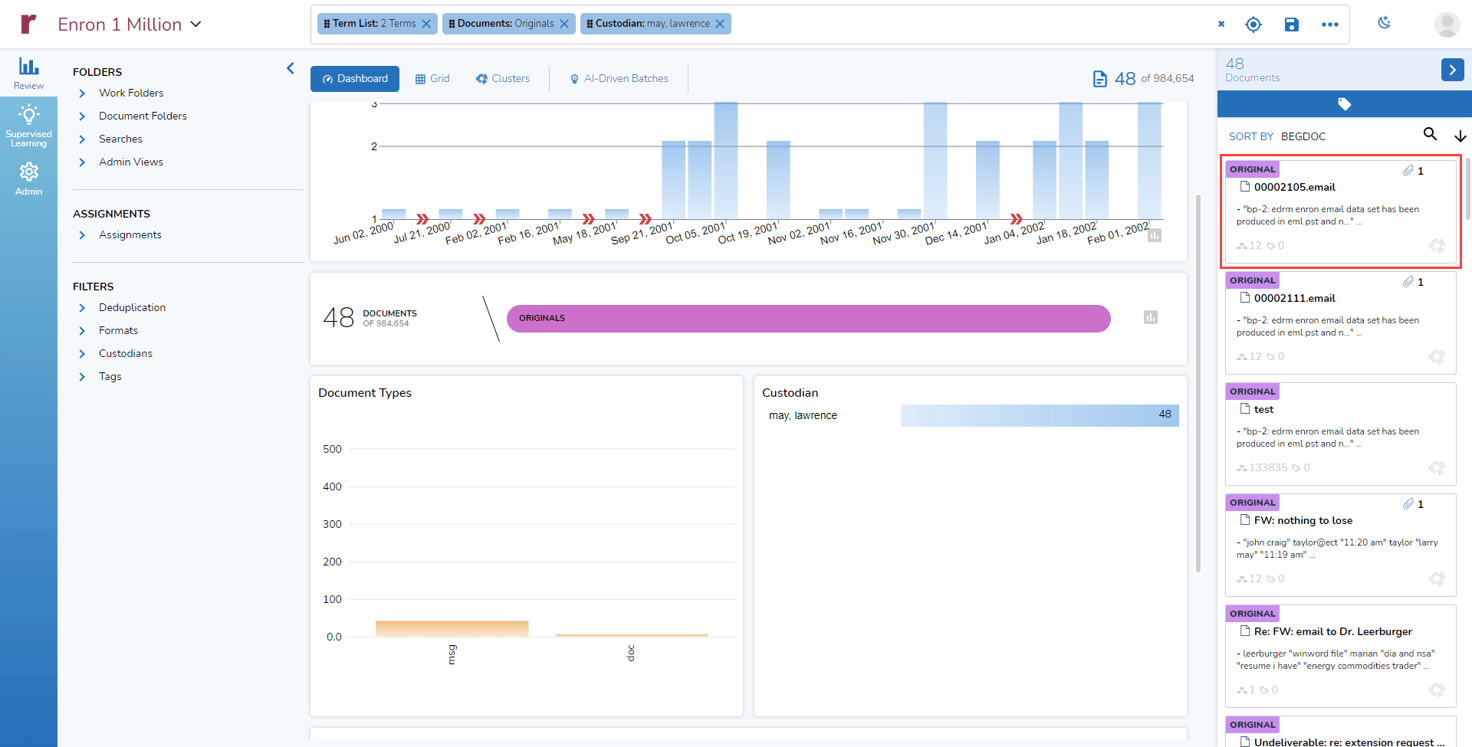
As I looked at that document, I realized that the reason my search for ljn returned this document was that Larry May’s email address starts with those three letters. That strongly suggests that ljn is not a useful search term:

Usually, I would do some sampling to confirm the conclusion I drew. For this exercise, I did not.
There is one last step I did. As Larry May might still have documents about LJM, I took a look at that. First, I went to FILTERS. Next, I clicked on Custodians to show display custodian names. Then, because I did not see Larry May, I clicked on View all… to get to the full list of custodians:
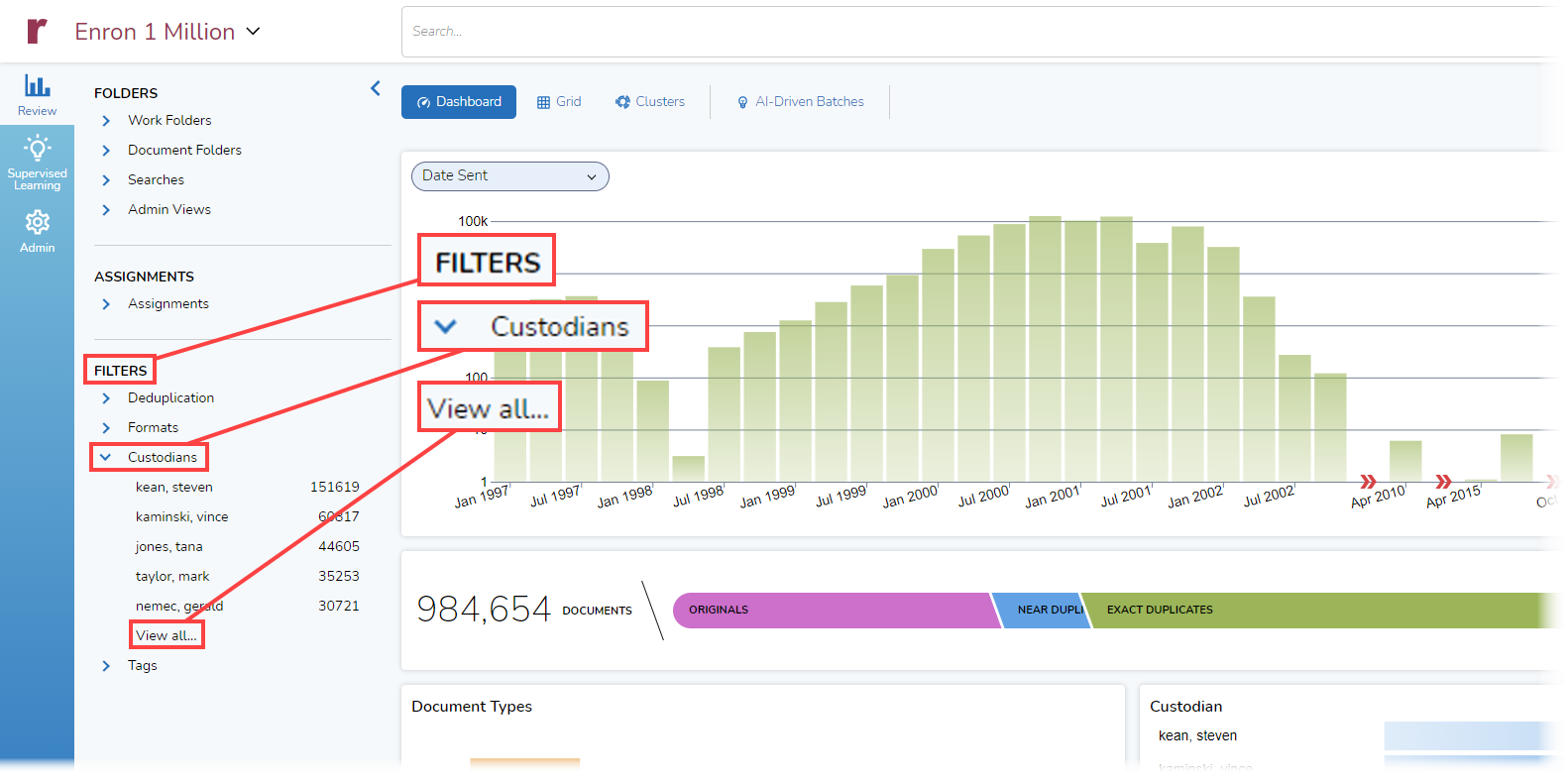
This brough up a pane that lets me search for and select custodians:
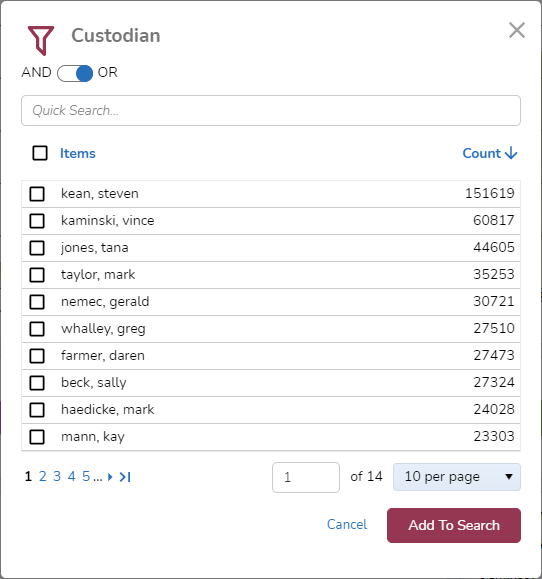
When I typed “may” in the search bar, I got back “may, lawrence”. I selected him and added him to my search:
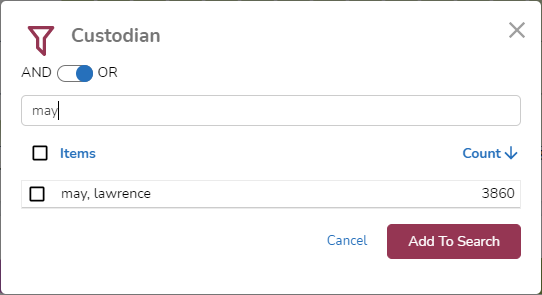
I then clicked on Term List, added ljm and ljm2 as terms, and added those terms to my search:
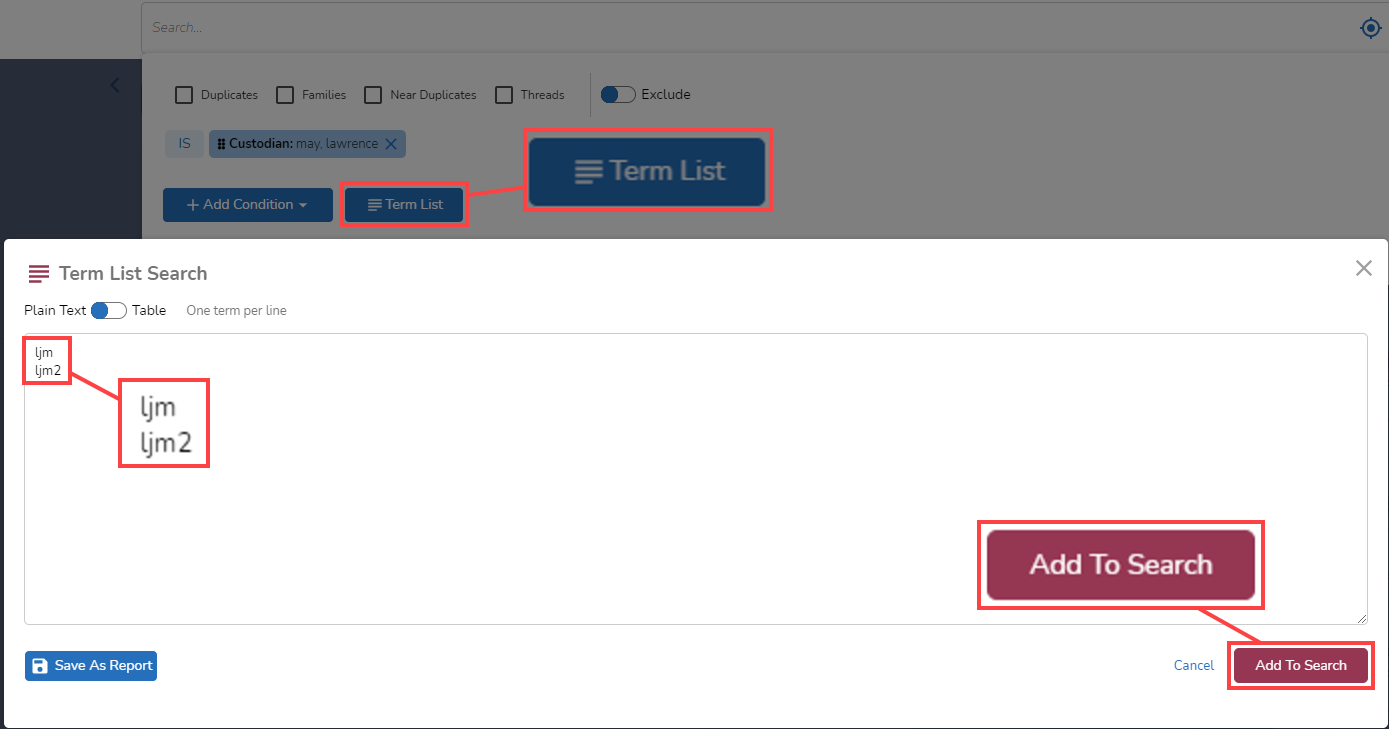
Once I did that, I previewed the results and got back eight documents where May is the custodian and the document contains either ljm or ljm2:
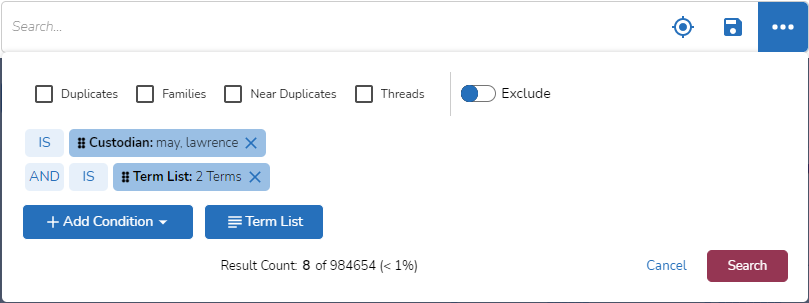
From here, I could look at those documents as part of my ongoing investigation. For today, however, I will stop here.
And There’s More
What I showed today are a few ways that with just a click or two Reveal 11 lets you search your data, helping you enjoy the highest quality speed to insight in the industry.
In posts to come, I’ll continue exploring the myriad ways you can use Reveal 11 and its greatly enhanced search capabilities.
For more information about how Reveal can empower your organization, contact us for a demo.

